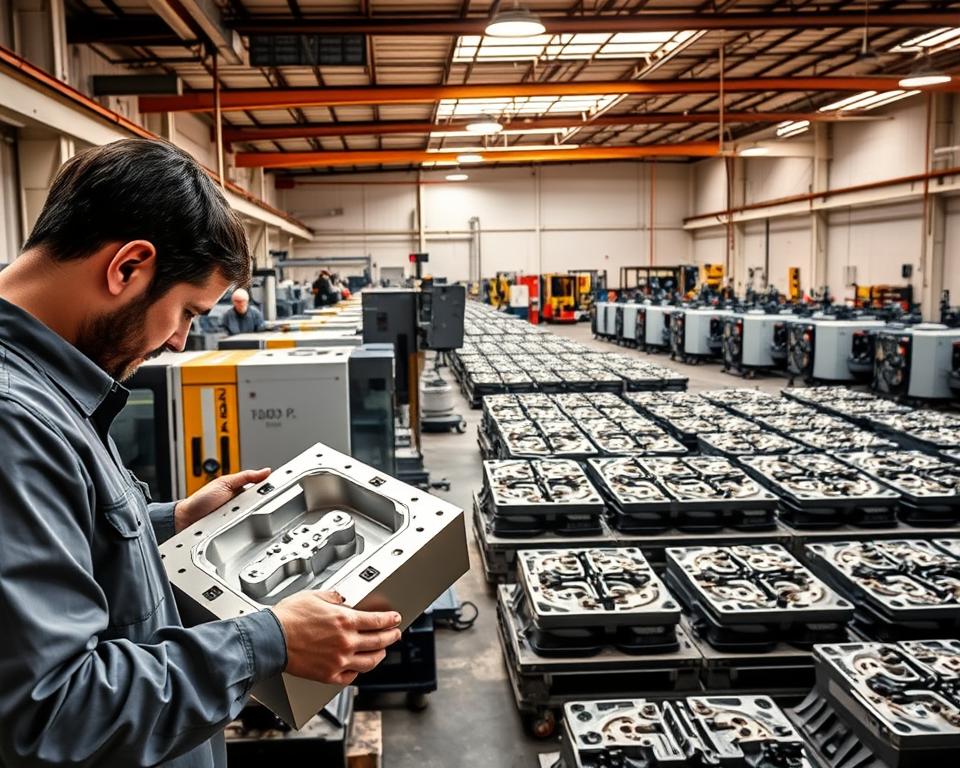Retail Revolution: The Benefits of Buying LED Light Bulbs in Bulk
Save Cash: Acquire Light Bulbs in Bulk Immediately
Ever found yourself dashing to the market because a lamp went out unexpectedly? It’s a common scenario that can disrupt your day. Consider if there was a more savvy approach to handle your light necessities? Purchasing in larger quantities can preserve moments, cash, and hassle.
Why Buy lighting bulbs in Bulk?
Handling illumination requirements effectively can preserve both time and cash. Be it a homeowner or manage a business area, acquiring wholesale delivers significant advantages. Let’s delve into the main factors to adopt this buy led light bulbs in bulk strategy.
Cost Savings Outlined
One significant perk of acquiring in volume is the decrease in per-unit cost. Store prices often include markups, but wholesale options provide more value. For instance, a coastal property owner needing sturdy light bulbs can reduce expenses by as much as 30% by acquiring in volume.
KoleImports supplies volume discounts, facilitating to maximize your spending. A customer shared, Excellent merchandise, superb value, and speedy shipping. This demonstrates the cost-effectiveness and excellence you can expect.
| Purchase Type | Unit Price | Savings per Year |
|---|---|---|
| Retail | $5.00 | $0 |
| Bulk | $3.50 | $180 |
Convenience for Vast Venues
In establishments such as vacation rentals or accommodation facilities, consistent lighting is crucial. Acquiring in volume secures you always have a steady stock. It also decreases the frequency of procurement processes, conserving hours and energy.
Property managers benefit from efficient inventory systems. Instead of frequent orders, you can keep a regular supply. This is especially useful for venues needing continuous lighting.
Opting for wholesale purchases, you’re not just saving money—you’re also easing your lighting maintenance. It’s a functional approach for both residential and enterprise applications.
Benefits of Acquiring from KoleImports & Closeouts
Looking for a reliable source for your lighting needs? KoleImports & Closeouts fulfills your needs. Their commitment to quality and customer satisfaction positions them as the premier option for buyers. Whether you require supplies for a massive task or simply need a steady supply, their selections are engineered to match your expectations.
Quality Assurance
KoleImports guarantees every item satisfies rigorous quality criteria. Their bulbs undergo intense evaluations to ensure lasting quality and efficiency. Received all bulbs in good condition, noted one content customer. This careful scrutiny makes sure you get reliable products every time.
They also supply guarantee warranties and effortless exchange policies. In the event of issues, their staff is on standby to support. Customized packaging for fragile items further ensures your delivery is secure.
Fast and Reliable Shipping
Need your order quickly? KoleImports ships. With shipping durations customized by order volume, they prioritize promptness. For orders exceeding \$1,000, free shipping is available, making it even more simple to purchase.
They partner with dependable couriers like USPS and FedEx, offering flexibility and damage protection.

Extremely fast. Highly content. You did a great packaging,
stated another content customer. This reliability is especially valuable for urgent endeavors.
Regardless if you manage an enterprise environment or renovating your residence, KoleImports & Closeouts provides a smooth process throughout every stage.
Categories of Lighting Bulbs Offered Wholesale
When it comes to lighting, not all options are created equal. Whether considering energy saving or longevity, bulbs are tailored for specific uses. Grasping the assortment on offer can assist you in making informed decisions for your space.
LED Illumination
LED options are a popular choice for their long lifespan and energy conservation. They outlast traditional incandescent bulbs, minimizing replacement expenses. Additionally, they consume far less power, which can lower your electricity bills.
Their versatility makes them adaptable, suitable for both homes and businesses. Whether you need troffers for office spaces or ceiling lights for homes, LED options ensure steady efficiency.
Incandescent Bulbs
Even though they are less efficient than LED options, incandescent bulbs are still frequently utilized. They offer a soft, pleasant illumination, making them ideal for ambiance creation or intimate settings such as lounges.
But their shorter lifespan means they may require more recurring changes. For specific applications where ambiance is key, these bulbs prove to be a trustworthy selection.
Energy-Efficient Options
Recent innovations have unveiled power-conserving bulbs that blend conventional luminosity and LED efficiency. These alternatives offer the intensity of traditional bulbs with the energy efficiency of LED systems.
Specialized products, like bulbs resistant to salt air, are ideal for coastal properties. Outdoor-specific selections are designed to withstand severe weather, ensuring durability and performance.
Given various color temperature choices, you can tailor your light setup to suit any mood or setting. Be it for bright task-oriented white or gentle warm hues for coziness, there’s an option for every requirement.
How to Choose the Right Bulbs for Your Demands
Choosing the right lighting can change any environment. If you are enhancing your dwelling or optimizing a commercial area, understanding your options guarantees both practicality and aesthetics. Here are the critical elements to consider.
Grasping Wattage and Lumens
Wattage measures energy consumption, while lumens show illumination level. A greater number of lumens means greater brightness. For instance, a 60W traditional bulb produces about 800 lumens, while an LED version uses only 10 watts for the same brightness.
Here’s a quick lumens-to-wattage conversion chart:
- 450 lumens = 40W (incandescent) / 6-9W (LED)
- 800 lumens = 60 watts (incandescent) / 10 to 13 watts via LED
- 1,600 lumens = 100 watts from incandescent / 16-20 watts (LED)
Aligning Lighting to Your Environment
Task-oriented lighting targets designated zones, like cooking areas or desks, requiring brighter bulbs. Ambient lighting, on the other hand establishes a cozy, welcoming environment in residential spaces such as living rooms and bedrooms.
Remember the Color Rendering Index (CRI) for true color depiction. A CRI above 80 is optimal for many settings. For business environments, opt for bulbs with a more elevated CRI to improve product displays or workspace clarity.
One customer remarked, My living room now boasts the perfect balance of coziness and functionality. This highlights the importance of selecting the right options for your needs.
Pro advice: Do not choose LED bulbs with a greenish tint, as they can distort colors. Select reputable brands like those available at KoleImports, which offer expert consultation to help you make the best choice.
In conclusion, examine the differences between dimmable and non-dimmable types and verify they suit your fittings by reviewing bulb base types like E26 or GU10. With these tips, you’ll establish an efficiently illuminated and cozy area tailored to your requirements.
User Testimonials with KoleImports & Closeouts
Buyer contentment is at the heart of every transaction, and KoleImports & Closeouts regularly exceeds expectations. Their focus on excellence and customer care has resulted in outstanding testimonials from buyers worldwide. Here’s what people are saying about their experiences.
Positive Feedback on Merchandise Reliability
Multiple reviewers applaud the durability and performance of the products. One restaurant manager shared, The bulbs delivered exceeded our replacement ones and have revamped our dining space. This feedback illustrates the influence of superior illumination on commercial environments.
Return buying are a reflection of consumer satisfaction. Over 70% of customers make repeat orders, citing steady excellence and dependability. Buyers from around the world also appreciate the attention to detail, with one reviewer noting, The packaging was excellent, and everything arrived in perfect condition.
Praise for Quick Shipping
Quick turnaround and promptness are vital aspects in customer satisfaction. Verified reviews often note fast delivery, with one customer stating, I received my order faster than expected, and the bulbs are still going strong after two years.
User transformation stories further underline the benefits of these products. A homeowner remarked, Our living room feels brighter and more inviting. The difference is night and day. These stories demonstrate the tangible benefits of selecting KoleImports & Closeouts.
- Five-star ratings underscore reliability and efficiency.
- Specific success stories, like restaurant lighting overhauls.
- Recurring order figures demonstrate buyer trust.
- International experiences underscore global reliability.
- Praise for packaging confirms safe transit.
Whether you’re upgrading your home or improving a business area, KoleImports & Closeouts offers products that meet and exceed expectations. Their dedication to excellence and client service positions them as the preferred option for all your illumination requirements.
Freight Terms and Expenses
Freight terms can define your overall shopping satisfaction. At KoleImports & Closeouts, we focus on openness and prompt service to guarantee timely and flawless deliveries. Find all details below about our delivery choices and fees.
Free Shipping for Purchases Exceeding \$1,000
When your purchase surpasses \$1,000, we supply no-cost shipping within the United States. This is our approach to acknowledging customers who buy in bulk. Nonetheless, certain items may be excluded from this offer due to dimensional or weight limitations.
- Dimensional weight calculations apply for oversized products.
- Excluded items include heavy or fragile goods requiring special handling.
Handling International Orders
We ship our products globally, guaranteeing that global customers can acquire top-notch merchandise. Below is a detailed process to the overseas ordering system:
- Navigate to the KoleImports website and explore the product catalog.
- Place your chosen products into the cart with the required quantities.
- Go to the checkout page to verify your order details and apply promotions.
- Choose your preferred payment method, including credit card, PayPal, or wire transfer.
- Confirm your order and receive a proforma invoice for your records.
Delivery times differ depending on location:
- North America: 5-7 business days
- For Europe: roughly 7-10 days
- Asia – 10 to 14 business days
We partner with reliable shippers like USPS and FedEx for trustworthy transit. Express shipping options are available for urgent needs. If any damage occurs during transit, our damage resolution protocol guarantees prompt handling. We also have a 14-day missing shipment guarantee, so you can buy with assurance.
If you have any questions regarding delivery, contact our customer service team at koleimports.com. We’re here to help you every step of the way.
Tips for Buying Bulk Light Bulbs
Pre-planning your illumination requirements can reduce both effort and cost. Whether you’re stocking up for a large property or simply making sure you’re always prepared, these tips will maximize the benefits of your acquisition.
Plan for Future Needs
Begin by forecasting your demand over the upcoming year. Develop an easy forecasting template to track how many units you’ll need. This averts overbuying or running out unexpectedly.
Appropriate storage is key to sustaining the quality of your lighting items. Keep them in a cool, dry place to prevent harm from dampness or heat variations. Best stored at temperatures spanning 50°F to 77°F.
Utilize stackable storage to sort your stock. Tag your containers with the bulb type and wattage for quick identification. To prevent pests, store bulbs in sealed containers or cabinets. Frequent inventory reviews keep you well-equipped.
Maintain original packaging to comply with warranty terms. This protects them and keeps documentation intact. Rotating batches so the oldest items are used first minimizes waste. Cutting down on waste.
Implementing these advice tips guarantees prolonged bulb lifespan and superior inventory upkeep. Be it for a large establishment or for regular stocking, these techniques guarantee operational efficiency and trustworthiness.
Enhancing Savings through Wholesale Buying
Wholesale buying delivers instant savings and supports fiscal health—it’s a method for sustainable cost savings. Whether you’re managing a home or a business, acquiring wholesale can result in substantial savings and increased operational effectiveness. Let’s explore how you can maximize your savings with this approach.
Understanding Bulk Discounts
A significant benefit of bulk buying is the pricing model. Vendors frequently implement tiered rates, where the price per item drops with higher quantities. For instance, buying 100 units rather than 10 can reduce costs by as much as 30% per product.
| Amount | Price Per Unit | Overall Savings |
|---|---|---|
| 10 | $5.00 | $0 |
| 50 | $4.00 | $50 |
| 100 | $3.50 | $150 |
Bulk discounts provide notable benefits for companies. A hotel chain, for instance, saved over $10,000 annually by switching to bulk purchases. This method minimizes order frequency, thereby conserving time and reducing administrative expenses.
Extended Financial Gains
In addition to initial cost reductions, bulk purchasing offers long-term financial advantages. Power-efficient products like LEDs help cut long-term electricity expenses. They also last longer, minimizing replacement and maintenance costs.
Here’s a breakdown of potential savings over five years:
- Reduced energy bills: LED options can cut costs by up to 40%.
- Maintenance cost savings: Fewer replacements mean lower labor expenses.
- Tax advantages: Bulk buying can be written off as a business expense.
One customer shared, Switching to bulk LED products cut our energy costs by half and eliminated frequent bulb replacements. Such a review underscores the practical gains of this approach.
Through strategic purchasing and leveraging volume savings, you can achieve significant savings while maintaining a reliable lighting setup. Begin reviewing your choices immediately and enjoy the economic advantages directly.
Tailored Lighting for Various Areas
Proper lighting is essential for crafting both atmosphere and function. Whether it’s a cozy living room or a bustling warehouse, the ideal configuration can enhance comfort, productivity, and safety. Let’s explore tailored solutions for residential and commercial environments.
Residential Lighting
Home lighting needs to harmonize style and utility. In the lounge, warm LED fixtures establish a friendly mood, while focused lighting in kitchens provides clear visibility for culinary activities. Intelligent lighting enables simple adjustments to brightness and hue.
Outdoor spaces benefit from weather-resistant lights that enhance security and curb appeal. Bulbs designed for moisture-prone areas, like bathrooms, deliver water resistance and robust light. Tailoring your home’s lighting setup ensures every room feels just right.
Industrial Lighting Solutions
In commercial settings, lighting needs vary widely. Warehouses need robust, high-intensity LED lighting for operational safety and productivity. Stores typically employ accent lights to showcase merchandise, while offices prioritize energy-efficient options that reduce eye strain.
Restaurants and hotels depend on ambient illumination to foster a warm dining atmosphere. Safety lights are crucial in educational and medical facilities to maintain security during outages. By choosing the right solutions, businesses can optimize both functionality and aesthetics.
Conclusion: Start Saving with Bulk Light Bulbs Today
Ready to transform your lighting setup while saving money? KoleImports & Closeouts delivers unmatched discounts on premium LED items, making sure your investment is maximized. Through wholesale buying, you can benefit from substantial discounts and lessen the need for constant replacements.
Take advantage of exclusive discounts available for a limited time. Our team is here to support you every step of the way, from selecting the right bulbs to ensuring fast and reliable delivery. Plus, choosing energy-efficient options helps reduce your environmental impact.
One satisfied customer shared, Transitioning to KoleImports proved the best choice; unparalleled savings and quality. Begin your path to smart buying today and reap the benefits. Visit KoleImports & Closeouts now and light up your space with confidence!









